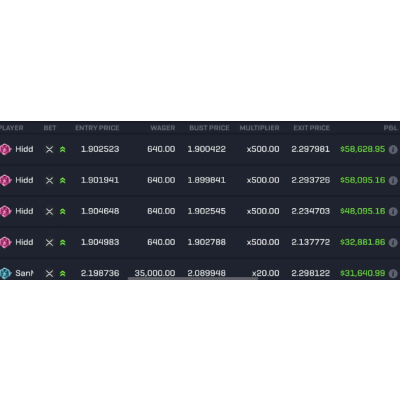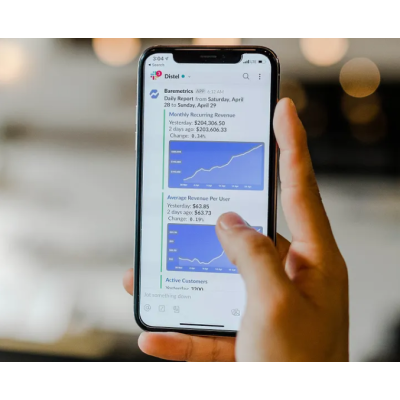valuezone
10 July 2023
Market Monitoring and Analysis
Market Monitoring and Analysis are two essential components of any successful arbitrage trading bot. Market monitoring allows the bot to identify potential arbitrage opportunities and track any ongoing or recent trends in the market. Through the analysis of collected data, the bot can then identify profitable opportunities and determine the best exit strategy. The bot can then take automated actions based on the analysis, such as buying or selling assets to capitalize on arbitrage opportunities. By continually monitoring the market and analyzing any data, the bot can ensure that it takes advantage of all arbitrage opportunities and maximize its profit potential.
- Automated trading bots: Trading bots are computer programs that use historical and real-time market data to continuously monitor price discrepancies and take advantage of arbitrage opportunities between multiple crypto exchanges.
- Smart order routing: Smart order routing systems are computer programs that monitor liquidity and price discrepancies between different exchanges in real-time and automatically route orders to the best exchange for execution.
- Price prediction algorithms: Price prediction algorithms use historical market data, chart patterns, and machine learning algorithms to forecast future prices of cryptocurrencies. These algorithms can be used to identify trading opportunities and optimize trading strategies.
- Market making bots: Market-making bots maintain a certain level of liquidity in the market by continuously placing buy and sell orders and help increase the efficiency of the markets by providing immediate bid-ask spreads.
Fast and Reliable Trade Execution
1. Data Collection: Collect real-time/historic pricing data from different exchanges (via web API, CSV, FIX, etc.)
2. Data Analysis: Analyzing data for arbitrage opportunities in multiple markets simultaneously.
3. Entry and Exit Planning: Planning well-timed entries and exits according to market conditions.
4. Risk Management: Implementing risk management strategies in order to prevent losses from large price movements in the markets.
5. Trade Execution: Executing trades within milliseconds to capitalize on the arbitrage opportunities before they vanish.
6. Portfolio and Position Tracking System: Keeping track of portfolio and position to ensure that the trades are being executed properly and tracking the profits and losses of each trade.
7. Software Integration: Making sure that the trading bot is integrated with APIs of multiple exchanges for seamless and simultaneous trade execution.
Risk Management and Capital Preservation
- Implement Market Data Collection: Develop a mechanism to gather historical and real-time market data (e.g., prices, volumes). Make sure that the collected data is reliable and accurate.
- Implement Risk Management Protocols: Develop risk management protocols to protect the capital from potential losses. Implement a trading limit system where trades are not executed if they exceed the predefined limits. Also, set a stop-loss limit to exit trades when losses reach a certain level.
- Develop Transaction Fee Estimation Algorithms: Design algorithms to accurately estimate withdrawal and transaction fees for trades. Estimate slippage as well, to ensure that the bot only executes trades that will produce a profit.
- Develop Arbitrage Trading Bot: Using the collected market data, transaction fees, and risk management protocols, develop an arbitrage trading bot. Test and validate the bot frequently to ensure that it is performing as expected.
- Monitor Performance: Monitor the performance of the bot to gain insight into its performance. Analyze trades to detect any potential risks or issues. Use the analysis to make changes to the bot or risk management protocols to ensure its effectiveness in the future.
Portfolio Management
The primary objective of an Arbitrage Trading bot is to take advantage of the price difference between two or more markets (such as exchanges or brokers). By simultaneously buying and selling various cryptocurrencies across different exchanges, Arbitrage bots seek to take advantage of temporary arbitrage opportunities before the opportunity disappears.
To design and develop an Arbitrage Trading bot, the following features need to be included in the design:
- Multiple Exchanges: The bot should support a wide variety of exchanges, in order to take advantage of arbitrage opportunities across different platforms.
- Position Sizing: The bot should be able to determine the size of each position in order to achieve optimal risk return.
- Risk and Trading Goals: The bot should also be able to adjust its position sizing strategies according to the trading goals and risk appetite of the user.
- Automation: The bot should also be automated to allow for faster trading decisions.
- Analytics: The bot should also be able to use analytics to help identify arbitrage opportunities.
- Security: Finally, security should be an integral part of the design, as the bot will likely be handling sensitive financial information.
Performance Tracking and Reporting
Design:
- Set up user accounts.
- Develop a trading platform and UI.
- Create a database to store trades, positions, balances, and other related data.
- Design a trading calculator to compare prices across multiple exchanges.
- Set up an algorithm to identify trade opportunities.
- Setup automated placement and execution of trades.
- Integrate API to communicate with exchanges in order to execute trades.
- Enable account authorization.
- Set up a secure system to store user information.
Development:
- Design a system to carry out the actions requested by the user.
- Writing algorithms and code to take advantage of arbitrage opportunities.
- Implement APIs to communicate with exchanges in order to execute trades.
- Implement Design Patterns and Architectural Patterns to ensure efficient scalability of the system support the bot code.
- Add error, performance, and success tracking analytics.
- Set up notifications and alert systems to monitor and notify traders of any changes in the bot’s behavior.
- Integrate analytics into the architecture to generate performance reports. • Develop UIs for the web or mobile platforms.
- Develop robust security protocols, data encryption, and user authentication.
Security and Reliability
Security:
- Use encryption for storing user data and API keys.
- Create separate encryption keys for each user and automate the process of resetting keys when required.
- Implement two-factor authentication for accessing user accounts.
- Monitor IP addresses and logins, and issue notifications in case of any suspicious or unauthorized access.
Updates & Maintenance:
- Monitor compatible APIs for upcoming updates and changes to ensure the Arbitrage Trading Bot is always running with current versions of available exchange APIs.
- Develop a systematic process for patching existing code in response to market changes and API updates.
- Develop automated testing systems and regression tests for more effective bug-fixing and system performance.
- Develop metrics to identify and analyze bottlenecks due to latency issues while successfully routing orders.
- Constantly test the system to make sure that the Trading Bot is able to run on different system configurations and at different load levels.

